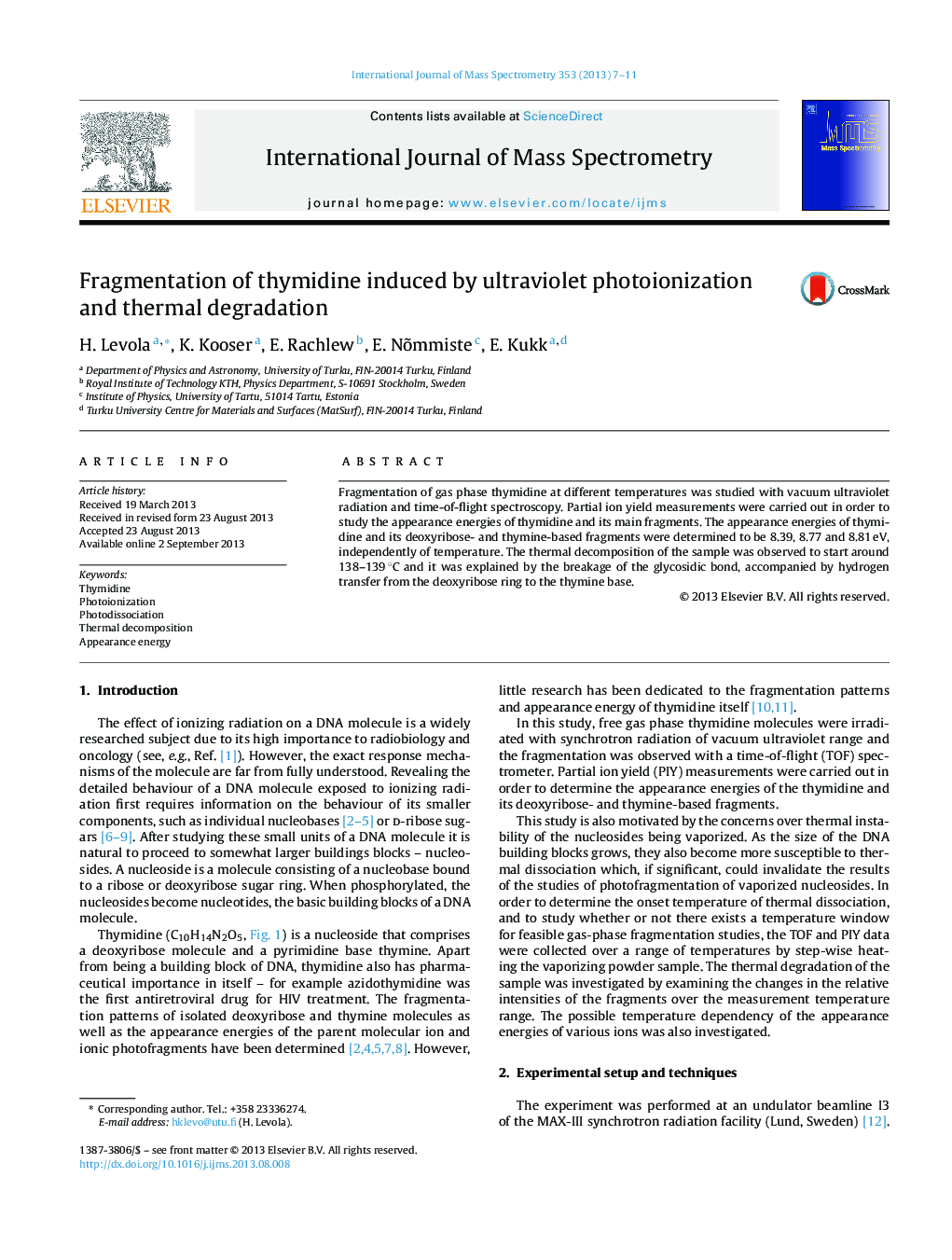| Article ID | Journal | Published Year | Pages | File Type |
|---|---|---|---|---|
| 1193307 | International Journal of Mass Spectrometry | 2013 | 5 Pages |
•The main fragments after photoionization are deoxyribose- and thymine-based.•Thermal decomposition of thymidine is observed to start around 138 °C.•Degradation process is explained by the rupture of glycosidic bond.•Appearance energies of thymidine and its fragments did not depend on temperature.
Fragmentation of gas phase thymidine at different temperatures was studied with vacuum ultraviolet radiation and time-of-flight spectroscopy. Partial ion yield measurements were carried out in order to study the appearance energies of thymidine and its main fragments. The appearance energies of thymidine and its deoxyribose- and thymine-based fragments were determined to be 8.39, 8.77 and 8.81 eV, independently of temperature. The thermal decomposition of the sample was observed to start around 138–139 °C and it was explained by the breakage of the glycosidic bond, accompanied by hydrogen transfer from the deoxyribose ring to the thymine base.
Graphical abstractFigure optionsDownload full-size imageDownload high-quality image (187 K)Download as PowerPoint slide
